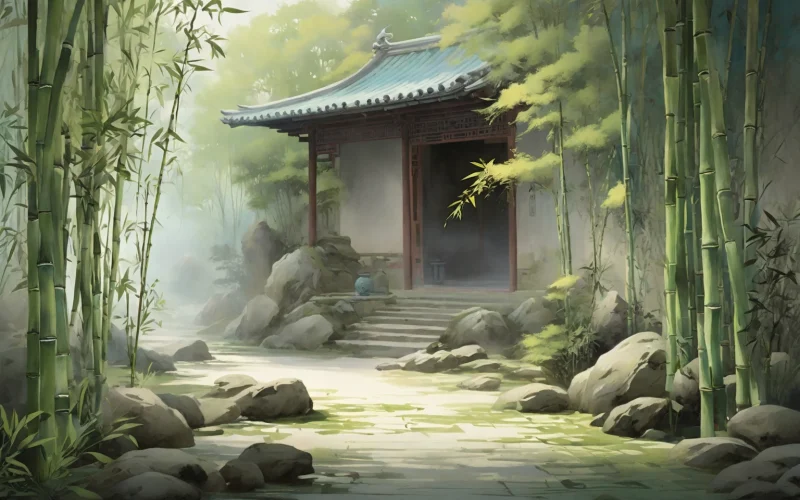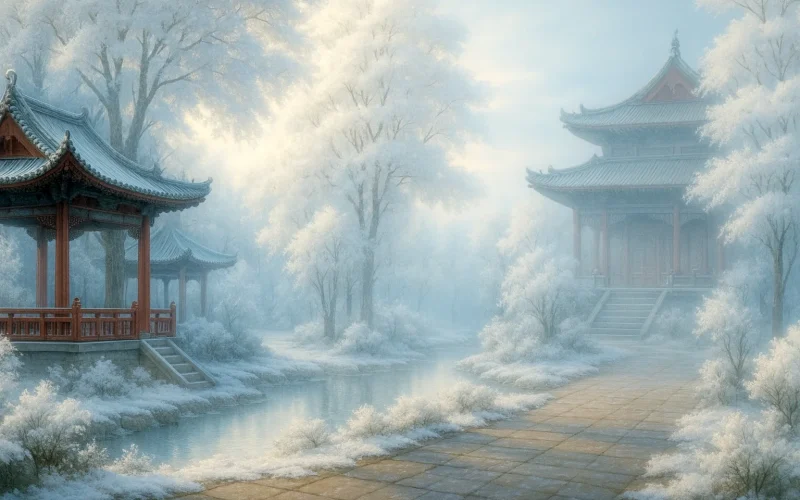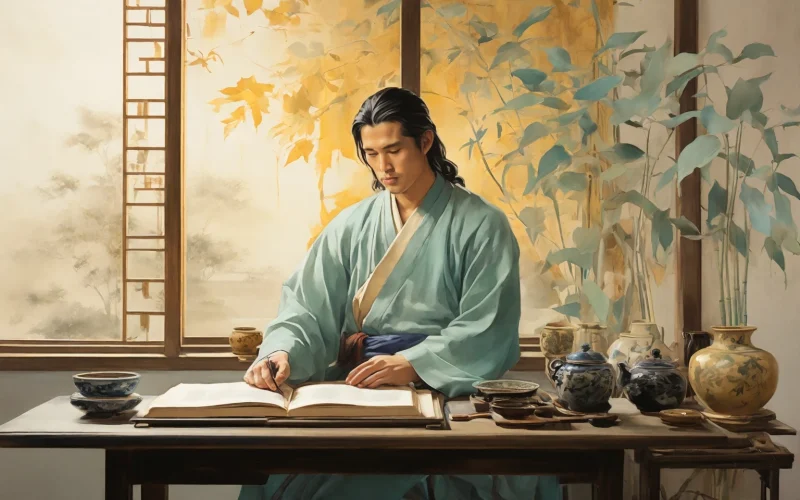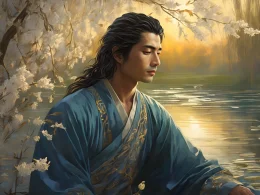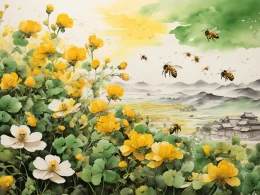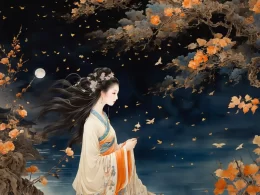Slender scholars stand in tight-ranked rows,
Their thirsty elegance defies drought's throes.
Wind's whisper cleanses worldly cares,
Rain-washed leaves sharpen distant stares.
Emerald daggers pierce moss-stained stones,
Lace shadows crack whitewashed wall's bones.
Return after all things frost has claimed—
See how jade-green flames stand refined!
Original Poem
「南轩竹」
曾巩
密竹娟娟数十茎,旱天萧洒有高情。
风吹已送烦心醒,雨洗还供远眼清。
新笋巧穿苔石去,碎阴微破粉墙生。
应须万物冰霜后,来看琅玕色转明。
Interpretation
Composed during the Xining era of Emperor Shenzong's reign, this work captures Zeng Gong's contemplative moments in his provincial residence. "South Veranda Bamboo" depicts a thriving cluster of emerald bamboos outside his southern window, through which the poet projects his spiritual aspirations and philosophical reflections. Renowned for his upright character, Zeng here employs the bamboo's physicality as a vessel for moral discourse, crafting a paradigm of Confucian virtue through natural imagery. The poem stands as a quintessential example of his "scenery-as-philosophy" aesthetic.
First Couplet: "密竹娟娟数十茎,旱天萧洒有高情。"
Mì zhú juān juān shù shí jīng, hàn tiān xiāo sǎ yǒu gāo qíng.
Dense bamboos—sleek and graceful, scores of stems;
parched days only heighten their unflustered nobility.
The opening establishes the bamboo's dual nature: physical density ("scores of stems") coexists with spiritual lightness ("unflustered nobility"). "Graceful" (娟娟) evokes the Confucian ideal of cultivated elegance, while "parched days" (旱天) introduces adversity as a revelatory condition. The plants' indifference to drought manifests the Stoic ideal of apatheia.
Second Couplet: "风吹已送烦心醒,雨洗还供远眼清。"
Fēng chuī yǐ sòng fán xīn xǐng, yǔ xǐ hái gōng yuǎn yǎn qīng.
Wind-stirred, they dispel my troubled thoughts;
rain-washed, they cleanse distant vistas' clarity.
Here, bamboo becomes a psychosomatic filter—transforming atmospheric phenomena into cognitive therapy. The parallel structure contrasts immediate psychological relief ("troubled thoughts") with lasting perceptual purification ("distant vistas"), suggesting bamboo as both palliative and epistemological lens. The verbs "dispel" (送) and "cleanse" (供) position nature as an active moral agent.
Third Couplet: "新笋巧穿苔石去,碎阴微破粉墙生。"
Xīn sǔn qiǎo chuān tái shí qù, suì yīn wēi pò fěn qiáng shēng.
New shoots pierce mossy rocks with quiet cunning;
dappled shadows breach white walls in lace-like fractures.
The bamboo's growth tactics mirror scholarly perseverance. "Quiet cunning" (巧) celebrates intellectual subtlety overcoming material obstacles (mossy rocks as institutional barriers). The "lace-like fractures" (碎阴) of light symbolize how virtuous influence permeates rigid structures (white walls representing bureaucratic formalism). This couplet exemplifies Zeng's signature fusion of botanical precision and political allegory.
Fourth Couplet: "应须万物冰霜后,来看琅玕色转明。"
Yīng xū wàn wù bīng shuāng hòu, lái kàn láng gān sè zhuǎn míng.
Only after frost has tested all creation
shall we see these jade-green hues gain transcendent radiance.
The finale posits adversity as revelatory crucible. "Frost" (冰霜) symbolizes historical trials that separate true virtue from transient beauty. The gemstone metaphor (琅玕—langgan, mythical jade) elevates bamboo beyond flora into cosmological permanence. The conditional "only after" (应须) underscores Zeng's belief in hardship as the sole authenticator of moral worth.
Holistic Appreciation
This poem meticulously depicts the noble grace and vibrant vitality of bamboo in a courtyard, capturing its essence under varying weather conditions and states of being. The opening couplets focus on the bamboo’s elegance and the solace it brings, while the middle couplets portray its growth and visual beauty. The final couplet elevates the theme with the metaphor of "langgan" (a mythical jade-like bamboo), transforming the poem from a mere ode to a garden plant into a profound allegory of human character. Structured with precision, the work seamlessly blends scene and sentiment, embedding philosophy within nature. It celebrates both the "stillness" and "motion" of bamboo—its quiet dignity and dynamic resilience—making it not only an aesthetic tribute to nature but also a poetic embodiment of moral ideals.
Artistic Merits
- Symbolism: Nature as Moral Allegory
The bamboo serves as a vehicle for expressing human virtues—its unyielding uprightness and purity mirror the poet’s aspirations for steadfast integrity. - Conciseness with Vivid Imagery
Lines like "New shoots pierce moss-clad rocks with grace" and "Dappled shadows breach the powdered wall" paint crystalline images, reflecting the refined aesthetic sensibilities of Song dynasty literati. - Subtle Fusion of Emotion and Reason
While ostensibly describing bamboo, the poem quietly extols the virtues of resilience and moral clarity, leaving room for contemplation.
Insights
This poem teaches us that true nobility, like bamboo, remains unshaken by drought or frost—rooted in authenticity, it grows only more striking through adversity. In facing life’s trials, we might emulate bamboo: tenacious yet unassuming, weathering storms to reveal an even truer form. By aligning himself with the bamboo, the poet underscores the Confucian ideals of self-cultivation and moral clarity, reminding us that in a turbulent world, inner composure and integrity can shine as brilliantly as jade.
About the Poet
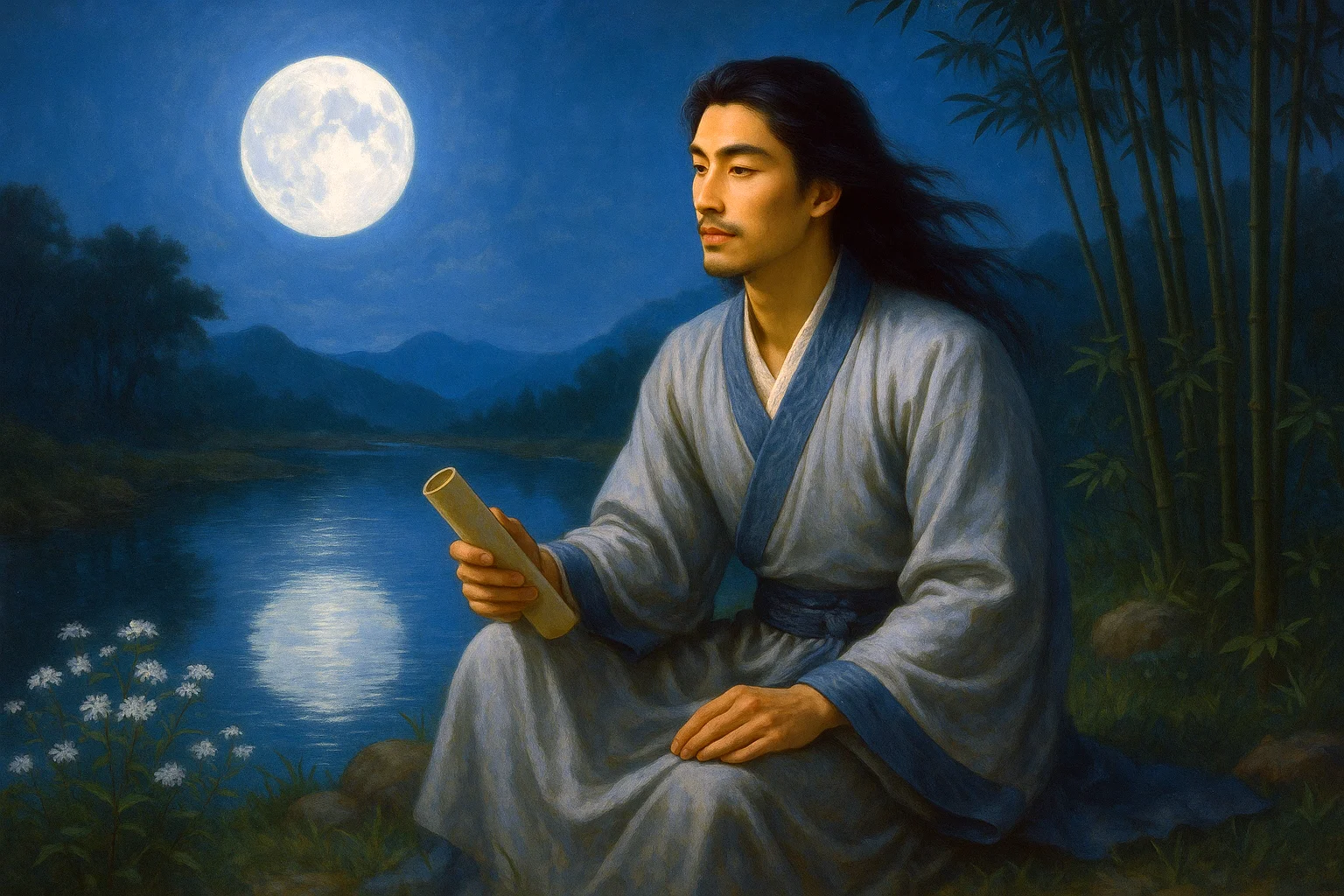
Zeng Gong (曾巩, 1019 - 1083), a native of Nanfeng in Jiangxi province, stands among the illustrious "Eight Great Masters of Tang-Song Prose." His writings distinguished themselves through an elegant classical balance, celebrated for their rigorous argumentation and refined literary craftsmanship. While his poetry embraced an artless subtlety, his prose achieved what critics hailed as "the very essence of purity" - an achievement that, though perhaps less dazzling than his contemporaries like Su Shi or Wang Anshi, earned him posthumous reverence as the founding master of the "Nanfeng Literary School."






